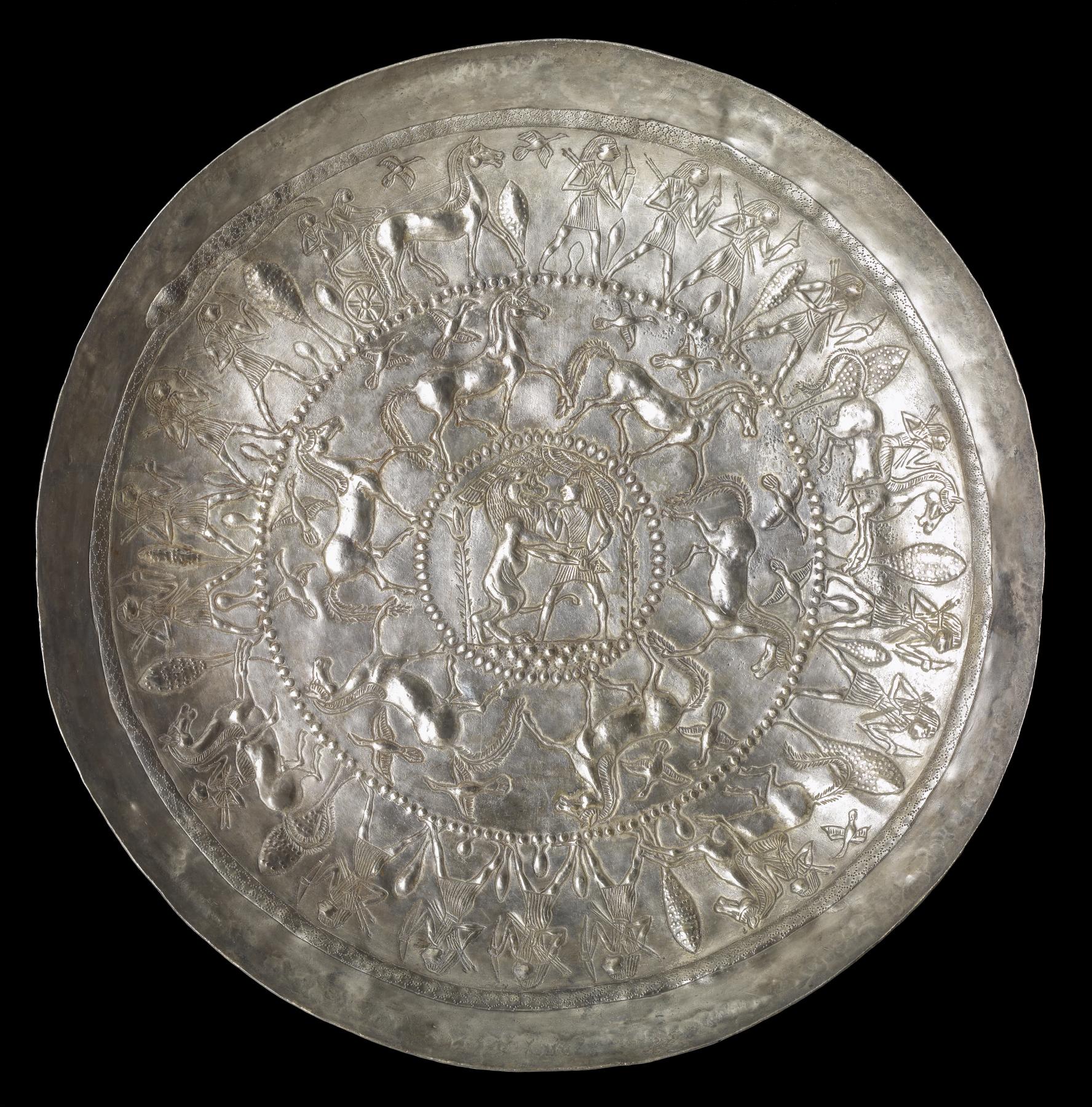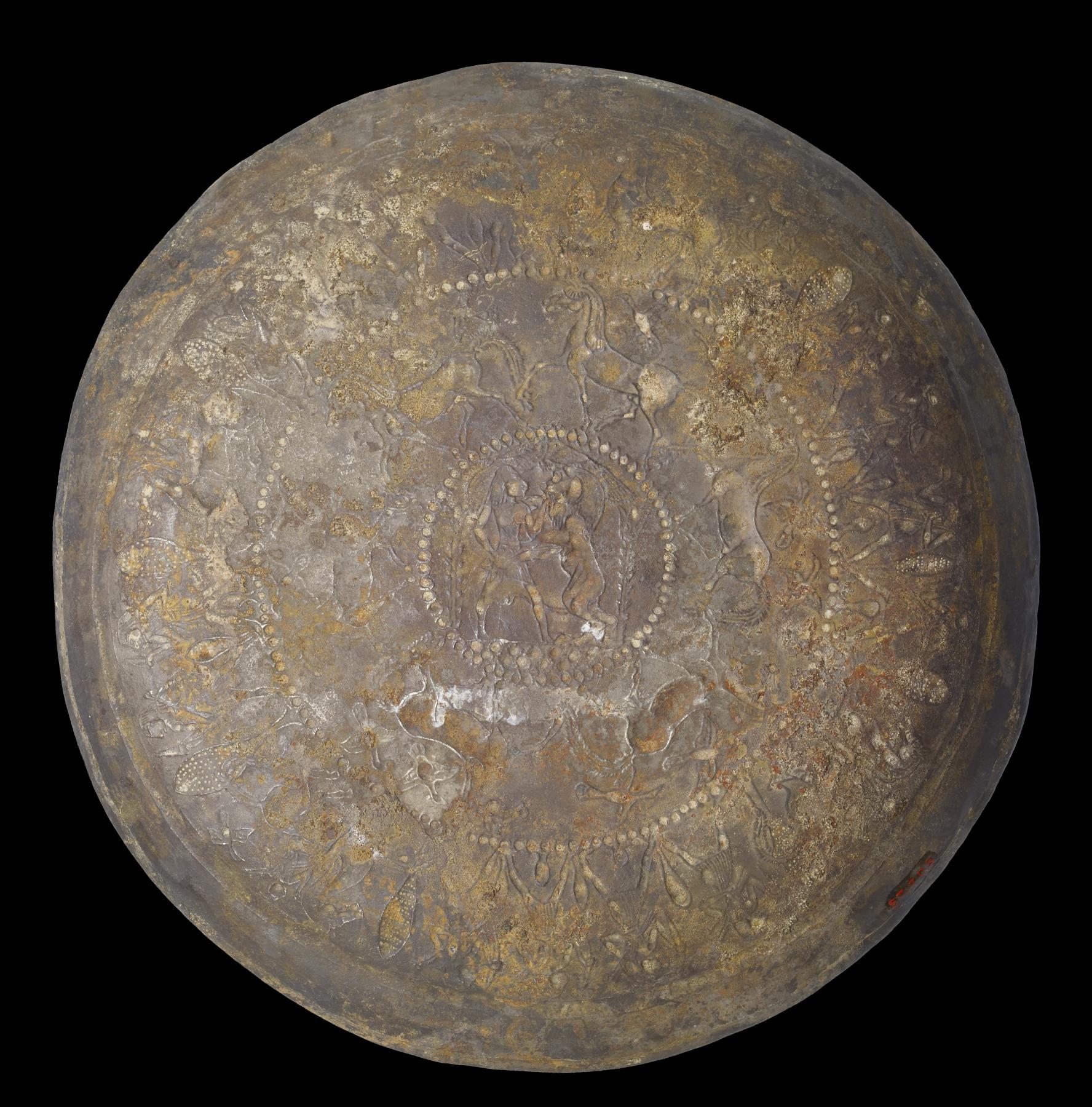Bowl with Hunting Scene
(Ancient Near East )
The embossed and engraved decoration inside this bowl, consisting of two concentric friezes and a central medallion, depicts a heroic narrative of a hunt. The dominant scene in the central medallion illustrates a confrontation between a lion and a warrior; a vulture, squeezed into the remaining space, may represent the outcome of the battle. Running around this central scene is a procession of horses and birds. The outer frieze presents the beginning of the hunt: the departure of archers, mounted spearmen, and charioteers. The design is encircled by a serpent with embossed scales.
This bowl belongs to a category of precious metal vessels discovered in elite tombs across the Italian Peninsula but is also linked to objects discovered in Cyprus, Greece, and Assyria. The proliferation of these objects is often linked to the spread of social banqueting practices, in which the bowls may have served as vessels.
Provenance
Provenance (from the French provenir, 'to come from/forth') is the chronology of the ownership, custody, or location of a historical object. Learn more about provenance at the Walters.
Barberini Collection, Contessa Menaf[o]glio [according to Seligmann]; Arnold Seligmann [date and mode of acquisition unknown]; Henry Walters, Baltimore, 1925, by purchase; Walters Art Museum, 1931, by bequest.
Exhibitions
| 2013 | Breath of Heaven, Breath of Earth: Ancient Near Eastern Art from American Collections. Hallie Ford Museum of Art, Willamette University, Salem. |
Conservation
| Date | Description | Narrative |
|---|---|---|
| 1/1/1938 | Examination | examined for condition |
| 9/28/1967 | Treatment | cleaned; coated |
| 10/20/1967 | Treatment | cleaned |
| 3/26/1968 | Treatment | cleaned; coated; other |
| 2/4/1976 | Examination | technical study |
| 1/18/1985 | Treatment | cleaned |
| 11/15/2000 | Treatment | cleaned |
| 11/28/2000 | Treatment | cleaned |
| 2/12/2009 | Treatment | cleaned; coated |
Measurements
H: 1 3/16 x Diam: 9 11/16 in. (3 x 24.6 cm)
Credit Line
Acquired by Henry Walters, 1925
Location in Museum
Accession Number
In libraries, galleries, museums, and archives, an accession number is a unique identifier assigned to each object in the collection.
In libraries, galleries, museums, and archives, an accession number is a unique identifier assigned to each object in the collection.
57.705




